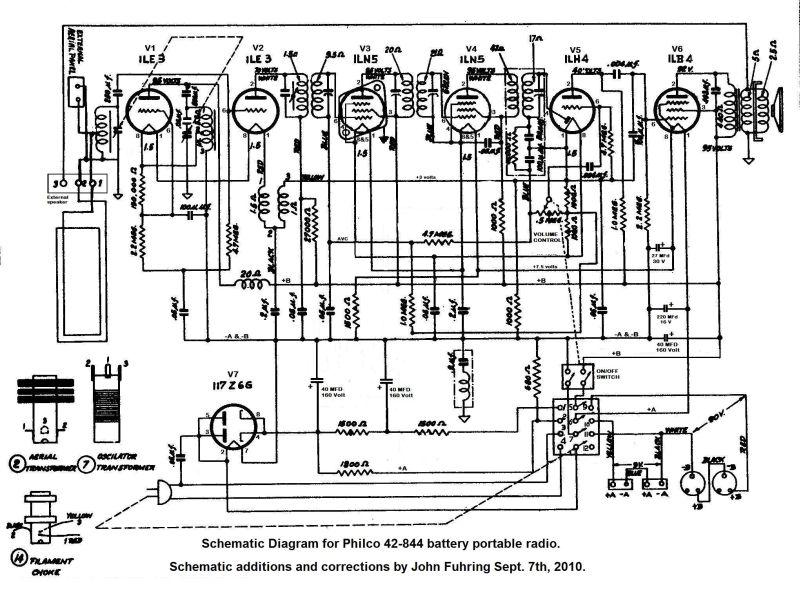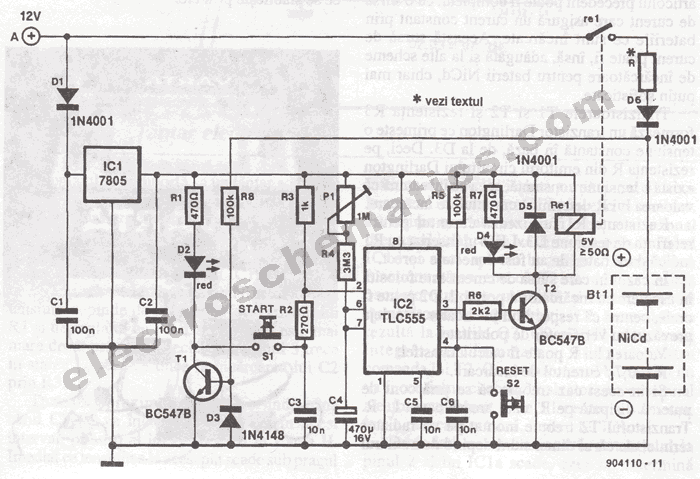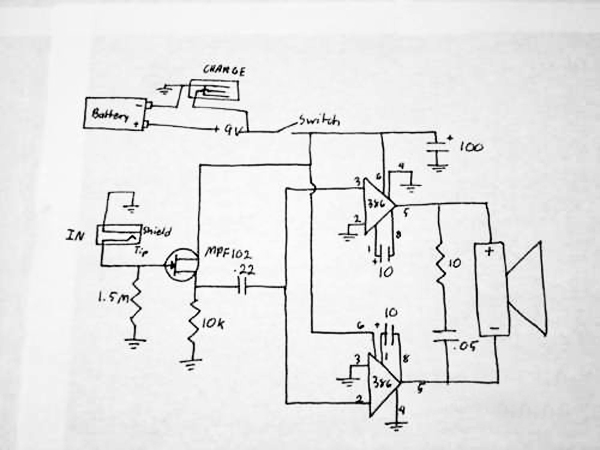
Philco Portable

It is a handsome battery-operated portable radio with a roll-top design that remains aesthetically pleasing even today. Initially, the radio was non-functional due to a burned-out detector tube, and the availability of a replacement was uncertain. The radio lacked a shortwave band, which diminished interest in attempting repairs. Additionally, obtaining a schematic diagram for the radio would have been nearly impossible at that time. However, with the advent of the Internet, schematics and repair manuals became accessible, along with replacement tubes. Regrettably, the gift from a mother’s friend was not acknowledged, although the radio is now appreciated as a vintage item from the summer of 1942. During that era, people enjoyed outings with battery-operated portable radios before the onset of World War II and the subsequent Cold War, which brought fears of nuclear conflict. The back of the radio reveals a dry cell battery pack beneath the main chassis, with an AC plug positioned for battery operation, and five silver-colored receiver tubes on the left, along with a black rectifier tube. The internal wiring serves as a loop antenna for receiving AM stations. A label on the back indicates that the radio can be used to receive sound while watching early pre-war television. These radios were quite expensive for their time, equivalent to about $400 today, making them a luxury for the wealthy. Only approximately 1,500 units were produced, raising questions about how many remain today. The subject radio is believed to be one of the better-preserved models, complete with a battery pack created from nine-volt transistor batteries, allowing for both plugged-in and portable operation. The radio was manufactured by the Philco Radio Battery Company, which initially thrived by producing batteries for early radios in the 1920s. However, with the introduction of AC rectifier tubes and electrolytic filter capacitors, the market for radio batteries diminished. To adapt, Philco transitioned to producing high-quality, affordable radios.
The schematic of this vintage Philco radio would typically include a power supply section, a radio frequency (RF) amplifier stage, a detector stage, an audio amplifier stage, and an output stage. The power supply would detail the connections for the dry cell battery pack and AC plug, indicating the switching mechanism that allows for operation in either mode. The RF amplifier stage would illustrate the arrangement of the receiver tubes, showing how they amplify incoming radio signals. The detector stage would specify the configuration of the burned-out detector tube, which is crucial for demodulating the AM signals into audio frequencies. The audio amplifier stage would depict the pathways leading to the speaker, ensuring that the audio output is clear and of high quality. Additionally, the schematic would highlight the loop antenna connections, demonstrating how it effectively picks up AM stations.
The radio's construction would likely incorporate a wooden cabinet, providing both aesthetic appeal and functional acoustics. The roll-top design not only serves as a unique feature but also protects the controls and speaker when not in use. The use of silver-colored tubes reflects the technology of the time, and the inclusion of a rectifier tube indicates the transition from battery-only operation to the flexibility of AC power.
Overall, this radio represents a significant piece of history, showcasing the evolution of radio technology and the cultural significance of portable entertainment during a transformative period in the 20th century. The combination of its design, functionality, and the story it carries makes it a valuable artifact for collectors and historians alike.It is a hansom battery portable radio with a roll top and even today it looks beautiful. When I was first given the radio it didn`t work. It had a burned out detector tube and I had no idea where I`d get a replacement for it. Most importantly, the radio didn`t have a shortwave band, so I really wasn`t interested enough in it to start trying to fix it. Besides that, I didn`t have a schematic diagram of the radio and back then, a schematic would have been nearly impossible to get. Only now, thanks to the Internet, are schematics and repair manuals available. Again, thanks to the Internet, replacement tubes are readily available too. By the way, I ungratefully failed to acknowledge the gift or thank my mother`s friend for her thoughtfulness. I wish now I would have because, short wave or no short wave, I really love this old radio. Today this radio is a beautiful relic from the real Summer of `42 when people who were young and alive then went on picnics and outings with their battery operated portable radios and enjoyed the peace and beauty of the outdoors before the Second World War swallowed it all up and then left us with the Cold War with all the terrible rumors of Nuclear War that followed.
With the rear open you can see the dry cell battery pack under the main chassis, the ac plug inserted in the "battery operation" position, the 5 silver colored receiver tubes on the left and the black rectifier tube on the far left. The wires going around the inside of the radio case is the loop antenna for pulling in AM stations. A label on the back suggests using this radio to receive the sound while watching early, pre-war, television.
These were rather expensive radios for their time and worth about $400 in today`s money so only the rich and elite would likely own one. Only about 1, 500 of these radios were ever made and I wonder how many of them survive to this day. I suspect that I have one of the nicer ones and mine is complete with a battery pack I made up from 9 volt transistor batteries that allows me to play the radio either plugged in or portable.
Speaking of batteries, this radio was made by the Philco Radio Battery Company. In the early 1920`s the Philco company made a good living making batteries for the early radios of that era because the early radios really ate up batteries. That`s all Philco made at the time but by the mid 1920s the first AC rectifier tubes started coming out along with the development of electrolytic filter capacitors and that doomed radio batteries to a small niche market.
There were still battery operated radios on farms that didn`t have electricity and early portable and military radios, but the market was shrinking fast. Rather than go out of business, Philco reinvented itself and began to make good, high quality, but very affordable radios.
Old brands like the super quality Atwater Kent` 🔗 External reference
The schematic of this vintage Philco radio would typically include a power supply section, a radio frequency (RF) amplifier stage, a detector stage, an audio amplifier stage, and an output stage. The power supply would detail the connections for the dry cell battery pack and AC plug, indicating the switching mechanism that allows for operation in either mode. The RF amplifier stage would illustrate the arrangement of the receiver tubes, showing how they amplify incoming radio signals. The detector stage would specify the configuration of the burned-out detector tube, which is crucial for demodulating the AM signals into audio frequencies. The audio amplifier stage would depict the pathways leading to the speaker, ensuring that the audio output is clear and of high quality. Additionally, the schematic would highlight the loop antenna connections, demonstrating how it effectively picks up AM stations.
The radio's construction would likely incorporate a wooden cabinet, providing both aesthetic appeal and functional acoustics. The roll-top design not only serves as a unique feature but also protects the controls and speaker when not in use. The use of silver-colored tubes reflects the technology of the time, and the inclusion of a rectifier tube indicates the transition from battery-only operation to the flexibility of AC power.
Overall, this radio represents a significant piece of history, showcasing the evolution of radio technology and the cultural significance of portable entertainment during a transformative period in the 20th century. The combination of its design, functionality, and the story it carries makes it a valuable artifact for collectors and historians alike.It is a hansom battery portable radio with a roll top and even today it looks beautiful. When I was first given the radio it didn`t work. It had a burned out detector tube and I had no idea where I`d get a replacement for it. Most importantly, the radio didn`t have a shortwave band, so I really wasn`t interested enough in it to start trying to fix it. Besides that, I didn`t have a schematic diagram of the radio and back then, a schematic would have been nearly impossible to get. Only now, thanks to the Internet, are schematics and repair manuals available. Again, thanks to the Internet, replacement tubes are readily available too. By the way, I ungratefully failed to acknowledge the gift or thank my mother`s friend for her thoughtfulness. I wish now I would have because, short wave or no short wave, I really love this old radio. Today this radio is a beautiful relic from the real Summer of `42 when people who were young and alive then went on picnics and outings with their battery operated portable radios and enjoyed the peace and beauty of the outdoors before the Second World War swallowed it all up and then left us with the Cold War with all the terrible rumors of Nuclear War that followed.
With the rear open you can see the dry cell battery pack under the main chassis, the ac plug inserted in the "battery operation" position, the 5 silver colored receiver tubes on the left and the black rectifier tube on the far left. The wires going around the inside of the radio case is the loop antenna for pulling in AM stations. A label on the back suggests using this radio to receive the sound while watching early, pre-war, television.
These were rather expensive radios for their time and worth about $400 in today`s money so only the rich and elite would likely own one. Only about 1, 500 of these radios were ever made and I wonder how many of them survive to this day. I suspect that I have one of the nicer ones and mine is complete with a battery pack I made up from 9 volt transistor batteries that allows me to play the radio either plugged in or portable.
Speaking of batteries, this radio was made by the Philco Radio Battery Company. In the early 1920`s the Philco company made a good living making batteries for the early radios of that era because the early radios really ate up batteries. That`s all Philco made at the time but by the mid 1920s the first AC rectifier tubes started coming out along with the development of electrolytic filter capacitors and that doomed radio batteries to a small niche market.
There were still battery operated radios on farms that didn`t have electricity and early portable and military radios, but the market was shrinking fast. Rather than go out of business, Philco reinvented itself and began to make good, high quality, but very affordable radios.
Old brands like the super quality Atwater Kent` 🔗 External reference





